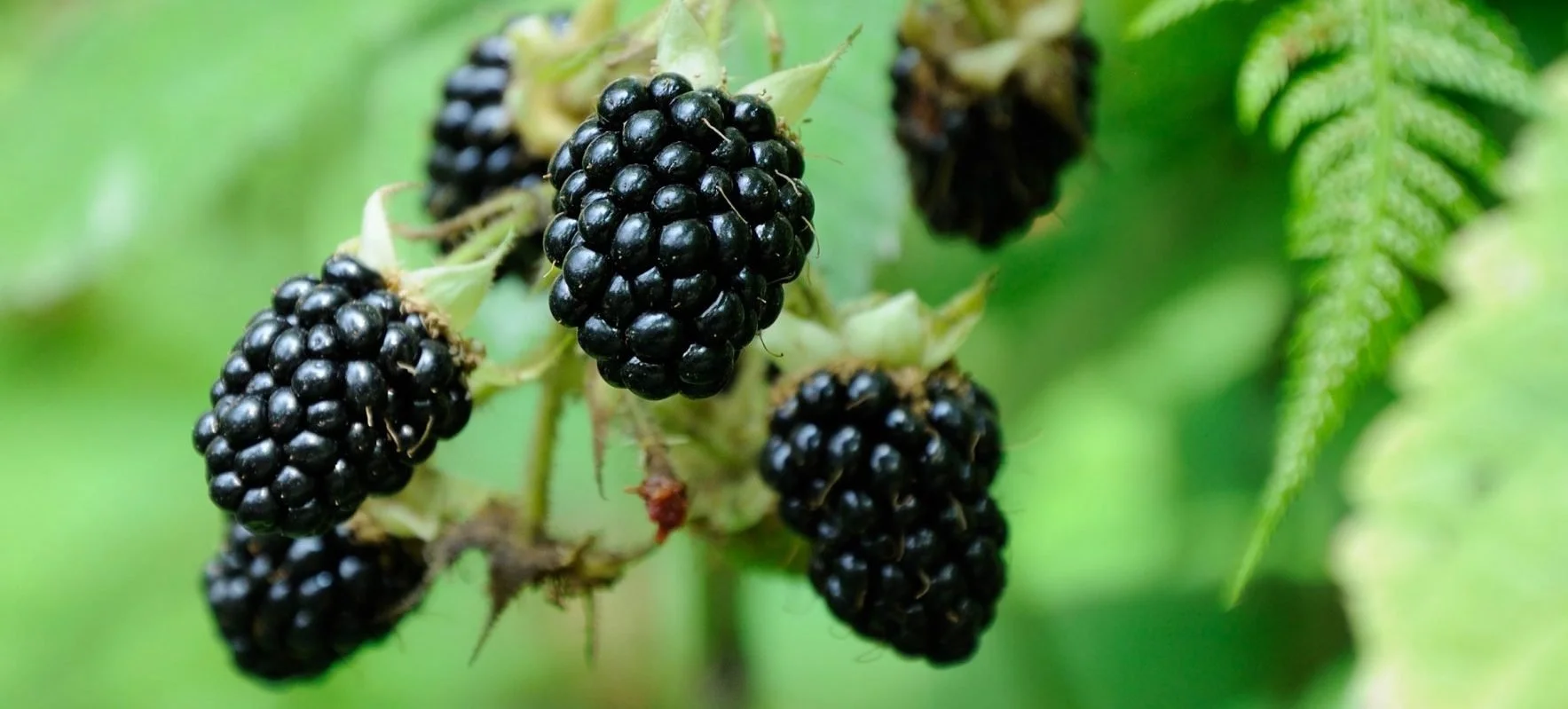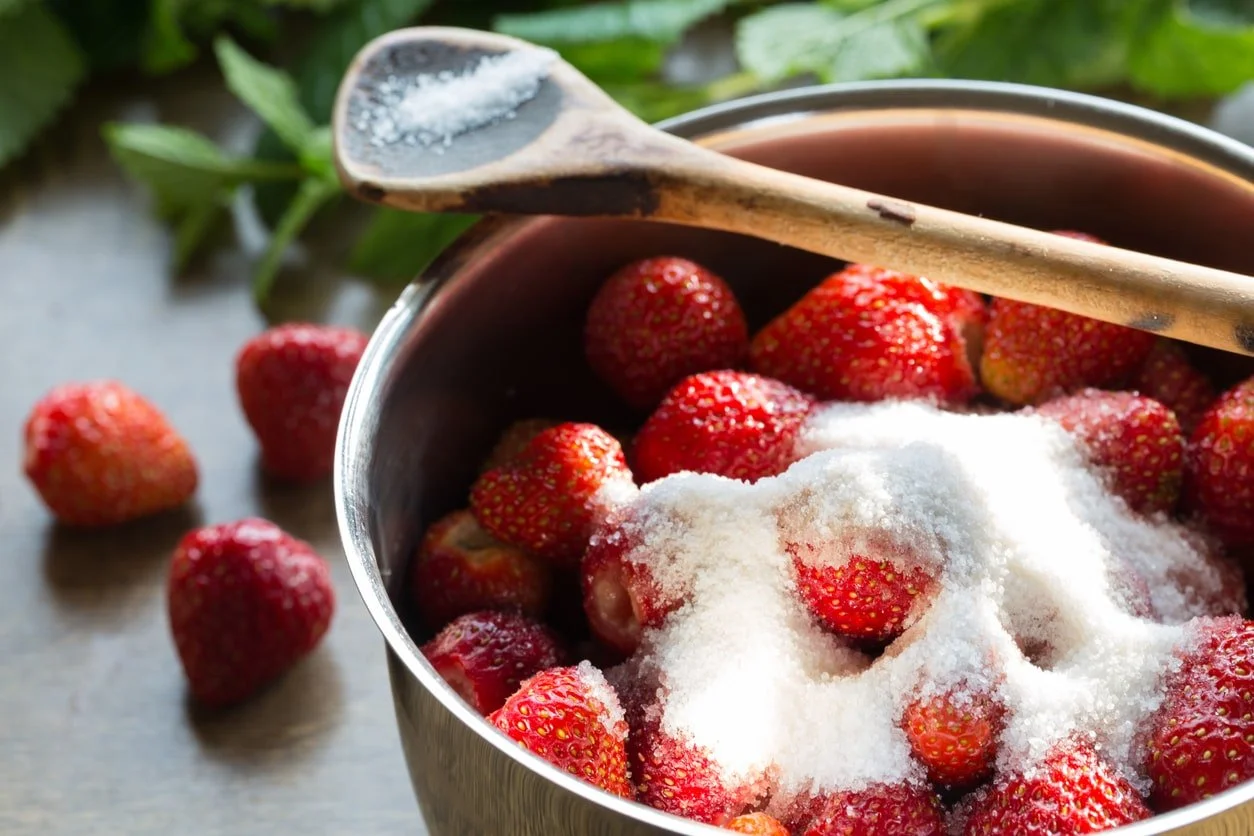Jams, Jellies, & Preserves: How To Make Jams For Fall
Discover > Texas Home Cooking > Jams, Jellies, & Preserves: How To Make Jams For Fall
Sweet fruit preserves, like jams and jellies, and conserves have one of the richest recorded histories of many other preserves because they were often a thing of the rich and the royals. Sugar (how long does sugar last?) was an item of luxury so fruits were often pickled or fermented in the working class.
History of Sweet Fruit Preserves
Like fermenting and pickling, jams and fruit preserves are ancient methods of food preservation, dating all the way back to the Stone Age. During the Paleolithic period, cavemen used honey or sugar to preserve fruits. Honey was ideal because of its lack of moisture and literal endless shelf life.
The first written jam recipes date back to ancient Rome in the 1st century AD, in a book written under the pseudonym of Marcus Gavius Apicius. The book, titled Apicius, is the earliest surviving cookbook and contained hundreds of recipes.
Louis XIV of France reigned from 1643 until his death in 1715. He was said to be so fond of jam that he insisted it be brought out to finish every meal
When sugar was brought to Europe from the Middle East during the Crusades, jams and jellies became particularly popular and production took off locally. When sugar was first brought to England, it went for around 2 shillings per pound (equating to roughly $50 a pound in today’s money).
The tyrant Napoleon Bonaparte can be thanked for the preservation of jams as he offered a generous reward to anyone who could preserve large quantities of food for soldiers on the move. Nicholas Appert also known as ‘the father of canning’ found a way by boiling and sealing the preserve in an airtight container.
8 Texas Fruits Perfect for Preservation
Explore the bounty of Texas with our guide to 8 fruits perfect for preservation, ensuring you can enjoy the flavors of the Lone Star State year-round.
Pioneers like John Chapman and Jerome Monroe Smucker, can be credited with the popularization of jam in America through the former’s planting of apple trees across the Midwest and the latter for opening the Welch company which started producing jams in 1918.
Jam Vs Preserve vs Jelly: The Difference Between the Three
So it begs the obvious question: What is the difference between jellies, jams, and preserves? It’s much more simple than you might think.
Jelly is made from strained fruit juice; almost like jello, but with a less gelatinous consistency.
Jam is made from mashed fruits so it’s thicker and more coarse, preserving any seeds or pieces of fruit.
Preserves are made with whole or large pieces of fruit. Preserves are often done best with smaller fruits, like red currants.
Easy Blackberry Preserve Recipe
Try your hand at making delicious blackberry preserves with our easy recipe, allowing you to savor the sweet and tangy goodness of blackberries all year long.
Seasonal Fruit Preserves and Jellies
As we spoke about previously, the purpose of food canning and preservation was to preserve food that was in-season, for the off-season. Producing and picking fruit when it’s not in season requires more processing which impacts flavor and nutrition.
When making jam by following fruit preserves recipes, all aspects of the fruit should be taken into consideration. Their sweetness, ripeness, and size. Typically the sweeter the fruit the less sugar you’ll need to add to put into the homemade jam (how long does homemade jam last?). A slightly underripe fruit has more naturally occurring pectin (how long does pectin last?), so you may not have to use any additional powdered pectin. And of course, for more acidic fruits you may not need to add lemon juice to activate the pectin.
Some fruits that are in season throughout the fall, and perfect for preserving:
Jellies, Jams, Compotes, and Preserves: What's the Difference
Dive into the world of fruit preservation with our exploration of jellies, jams, compotes, and preserves, unraveling the delicious differences between these delightful concoctions.
Equipment & Ingredients for Fruit Preserves Recipes
Prepare yourself for a journey into the world of preserves with our guide on prepping for preserves, offering tips and tricks for successful and flavorful preservation.
Jam Pan
Jam pans are wide, shallow, and have slanted sides. The slanted sides help water evaporate. Traditional jam pans are made of copper, and, while copper is great for many things, it is very reactive (especially with acid) and can taint food. Most copper pans are lined with something like tin, but you can use unlined pans, which a lot of people swear by. Just make sure you use a lot of sugar to neutralize any acids in the fruit or added.
Jars & Lids
Clean jars and lids need to be sterilized prior to preservation. This can be done by simply washing the glass jars and lids with hot soapy water and then drying them in a 320-degree oven.
Flour Sacks
Flour sacks (in case you’re making jelly) are used to filter fruit juice. Of course, there are plenty of alternatives like muslin bags, cotton cone filters, and even strainers that are advertised as ‘Jelly strainers’. Generally speaking, jelly strainers do the same job as the others so we advise foregoing them and their unnecessary price mark-up.
Funnel
Canning funnels come in a wide variety of shapes and sizes, so you don’t have to worry about pushing large pieces of fruit through a small funnel tube. They’ll only set you back a few dollars but are incredibly versatile.
Get creative with your canning endeavors with our collection of unique canning ideas, adding a twist to traditional preservation methods for a delightful culinary experience.
Canning Pot
Canning pots are interchangeable with stock pots or any other large pot really. The only two important factors are that they have a lid and that they’re big enough to hold your canning rack comfortably.
Canning Rack
A canning rack allows you to safely submerge and remove multiple jars into a boiling water bath to pressurize and vacuum seal them.
Pectin
Pectin is a polysaccharide (a form of carbohydrate most abundantly found in food) that occurs naturally in fruits and vegetables. It holds cell walls together like cement between bricks, and forms a web-like lattice when exposed to heat, which causes the jams to thicken as they cool.
Not all fruits and vegetables have equal concentrations of pectin. Citrus fruits, apples, berries, peaches, apricots, cherries, and grapes are, for example, high in their natural pectin content.
As time goes on and fruits ripen, the pectin (mostly concentrated in the skin of the fruit, and core) starts to break down into pectic acid which is not good for thickening or gelling. Ripeness is another factor that dictates whether or not it may be good to use pectin.
Whether or not you use pectin really comes down to one factor, which depends completely on your preference: consistency. When you don’t use any pectin the fruit (or rather the contents of pectin in said fruit) will determine how thick the homemade jam will be, so something like a raspberry jam will be much more viscous than, say, an apple or peach preserves.
Preserving Produce in the Fall
Embrace the fall harvest with our guide to preserving produce, ensuring you capture the essence of autumn flavors to enjoy throughout the year.
Sugar
A lot of jams call for extra granulated sugar, which can seem like a lot, but is incredibly helpful for preservation and a favorable texture. You can choose to follow a sugar-free homemade jam recipe that is good for diabetics, but jams and jellies are probably something you should steer clear of if you’re into a sugar-free diet.
The amount of sugar mostly depends on the sweetness of the fruit; typically you’ll need ¼ cup up to ⅔ of a cup of sugar for every pound of fruit. There are of course a lot of alternatives to cane sugar (or in most modern cases beet sugar) such as honey, agave nectar, or mesquite powder (how long does mesquite powder last?).
Acid
Citric acid (how long does citric acid last?) from lemon juice, lime, orange, and other citrus fruit helps extract more pectin from the fruits you’re using and allows it to set more quickly. As culinary theory also dictates, using acid will help neutralize some of the sweetness for a more balanced fruit jam.
As we all hopefully know, jam doesn’t only have to be made from fruit. Say you’re making a tomato jam (which yes I know is technically a fruit, but don’t be that guy), you can add a splash of balsamic vinegar. Citric acid is not a necessity, although I personally find it complements the fruit best without adding too much extra flavor.
If you’re into extra flavorings, champagne or cider vinegar could make things a little more interesting.
Method
Macerate
The first step (and a rather important one) to make sweet fruit preserves is to macerate pieces of fresh fruit, meaning you add your fruit to a bowl with the sugar, combine them, then let the sugar break down the fruit. This can be done within a minimum of two hours, but for best results, place it in the fridge overnight. If your fruit has skin and a pit make sure you remove both.
Making the Best Seasonal Food, Texas Style
Learn the art of making the best seasonal food, Texas style, as we guide you through the flavors and techniques that define Texan culinary traditions.
Boil the Fruit
Transfer the macerated fruit to a suitable saucepan or pot, then place it over medium heat with around two teaspoons of lemon juice or any other acid of your choice per pound of fruit. Simmer the fruit for a couple of minutes and, if you’d like a softer consistency, mash it up with a potato masher or wooden spoon. Stir constantly as you reduce the fruit until it reaches your desired consistency - just keep in mind that the hot jam will thicken as it cools. You can choose to wait for the jam to cool completely if you like a thick finish.
The Plate Test
Once you think your jam may be ready, there’s a simple test you can do to check how set your jam is. Simply place a plate in the freezer 10 minutes beforehand and, when you think your jam may be ready, take it out. Put a small amount of jam onto the cold plate - it should set in a few seconds, and if you’re happy with the consistency it’s time to jar up you’re homemade preserves!
Straining (Optional)
Once the preserve has passed the plate test, you can optionally strain it through a fine-mesh sieve to get rid of any seeds. Personally, not all jams will benefit from it, peach jam for example I find is much better with a little extra bite, but something like strawberry or raspberry that has a lot of seeds may benefit from it. But like pectin, it’s dealer’s choice so I’ll leave this step up to you.
Jarring
If you have a skilled, steady hand you could just pour the jam from pot to jar without too much issue, but to avoid any mess, use a jar funnel to avoid any sticky overspill. After that, you can close the lids then place your perfect jam into the fridge for up to a month. Your jam will keep just fine in the fridge, although it will thicken up as it cools. If you don't want it quite so thick, add a little bit of hot water back in and stir it until you're happy with the consistency.
Jam making is, hands down, one of the easiest ways to preserve summer produce, mainly because you can do it with very little in the way of special equipment. Also, once you've tasted homemade jam, chances are you'll never want to go back to store-bought jams. From super-tart strawberry jam to savory roasted garlic chive jam, there's no shortage of flavors—you're only limited by your imagination. However you decide to do it, we hope that this guide has inspired you to try making your own jam!





